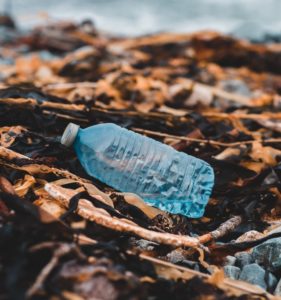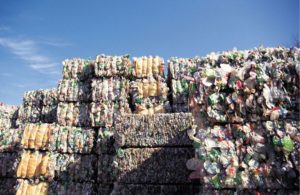
Source: theeverydayenvironmentalist.com
Recycling has been a key part of sustainable waste management for decades, however, as many people both inside and outside of the recycling industry have pointed out, recycling alone won’t save the planet.
Today, despite the advances and innovations within the industry, there are still many materials that are difficult to recycle. And, with new products entering the market every day, recycling programs in municipalities across the US struggle to keep up. Is the problem with the recyclers themselves, or the recyclability of the products and materials we have come to rely on?
Here we look at three problematic areas within the recycling process when it comes to our most recognizable products and materials—the mixing of materials; problematic design or use; and inherently problematic materials.
Why is it hard to recycle mixed materials?
Mixed material products are hard to recycle because materials must be isolated to effectively process and then reuse them. Often, products mix materials that consumers might not even notice, such as water bottles that use different types of plastics for the body and the cap, one recyclable and the other not. This creates problems when they are disposed of together, with existing recycling systems unable to separate them without costly human intervention. Even if the difference is obvious, this extra step of separation can still be a barrier for some to engage with recycling, with many consumers simply disposing of the entire product in the recycling bin.
Furthermore, while a lid is easily separated from a bottle, this is not the case for many other mixed-material products. For example, padded envelopes are difficult to recycle because they are made of a paper outside and plastic padding. They are hard to separate and thus almost impossible to recycle — assuming people would take the time to break them apart.
Other common examples of mixed-material products that are difficult to recycle include:
 Paper cups
Paper cups
The takeaway coffee cups seem like they can be easily recycled despite being a mixed material—simply separate the plastic top from the paper body. However, these aren’t the only materials these products contain, and despite appearances, they are almost exclusively not recyclable. A large proportion of these designs include a thin plastic film that keeps the cups watertight, and due to this, they almost always end up in landfill.
 Cartons (for milk, juice, etc.)
Cartons (for milk, juice, etc.)
Similar to take-away coffee cups, cartons are difficult to recycle products due to the plastic or wax coating on the interior. Again, these products are not fit for composting, and while wax is an eco-friendlier option, it is also difficult to recycle thanks to those same separation issues. The same is true for other wax-coated products such as wax paper.
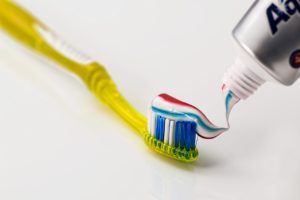 Toothpaste tubes
Toothpaste tubes
Whether made of plastic, metal, or a combination of the two, toothpaste tubes are essentially impossible to recycle. This is not only due to the multi-material design of these products, but also the fact that they are extremely difficult to empty entirely—meaning the leftover toothpaste contamination is a huge issue for recycling facilities.
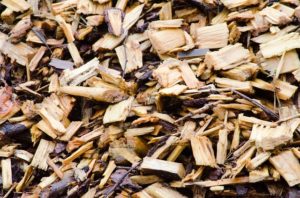 Why is it difficult to recycle composite materials?
Why is it difficult to recycle composite materials?
Mixed-material products use distinct resources to create a product (cardboard container with a plastic liner), while composite materials merge two resources to create a new material, which is in turn used in various applications like construction.
Composite materials are far harder to separate because the two materials are combined on a foundational level. You can remove the cap from a bottle, and even the padding from an envelope, but not the resin from chipboard.
Common examples of composite products that are difficult to recycle include:
Particleboard (chipboard)
A common example of a composite material is particle board, which is made of woodchips and synthetic resin pressed or extruded into shape. This composite wood material is found in furniture, cupboards, kitchen surfaces, and many other applications and is very difficult to recycle. That said, it can sometimes be turned into new particle board, but thanks to its propensity to crumble, is more often seen piled in skips— a compelling reason to invest in more sustainable construction and demolition (C&D) waste management.
 Fiberglass
Fiberglass
Used for everything from the insulation in walls to surfboards and cars, fiberglass has been a popular construction material for almost a century. It is, however, incredibly difficult to recycle due to being made of a composite of plastic and glass. What’s more, it also poses a serious health hazard when raw, and thus any form of reuse or disposal is extremely problematic.
Products that are inherently hard to recycle
A product’s design is often the number one factor in its recyclability. In fact, product design that promotes reducing and reusing materials over recycling them is a critical component of the zero-waste hierarchy, pushing manufacturers to innovate new products with circularity in mind.
Why are plastic bags difficult to recycle?
The plastic that grocery store bags are made of is typically recyclable. However, plastic bags are still difficult to recycle because of the way they are made. They are thin and fragile, so when added to the normal plastic recycling stream, they regularly clog machines. This is one of the reasons that plastic bag bans are being implemented across the US.
Why can’t contaminated products be recycled?
Contaminated products can’t be recycled, and if they make their way into recycling plants, they can have damaging effects on machinery and the quality of the materials that are eventually produced. Therefore, products that are designed to be soiled through normal use – such as the grease on a pizza box or the shampoo in plastic bottles – can be difficult materials to recycle. The same is true for many textiles and other products that are naturally contaminated through use.
Materials that are difficult to recycle
Additionally, some materials that we may inherently associate with the recycling industry can remain problematic when it comes to real-world processing. Therefore, any product made with (even in part) those materials is also hard to recycle. Unfortunately, these include some of the most common materials in production today.
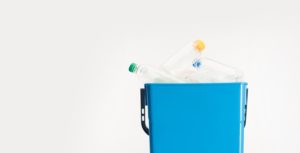 Plastic
Plastic
Plastic is difficult to recycle because there are many different types of it—some of which can be recycled and some of which can’t. What’s more, even the types that can be processed are often not thanks to high costs, low-quality outcomes, and questionable carbon footprints of recycling systems.
Of the seven types of plastic commonly used, only two are commonly recycled through curbside programs. Some of the most common types, such as polystyrene and Styrofoam, which are used for things like food containers and electronics packaging, are hardly ever recycled. This is further exacerbated by the types of products being made, such as thin films and bags designed to carry branding but serve no further purpose.
Some types of plastic are also difficult to recycle due to their toxicity. For example, while polyvinyl chloride (PVC) can be recycled, it is rarely done due to the costly processes involved to deal with the high levels of chlorine produced.
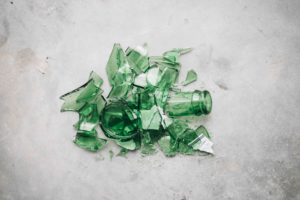 Glass
Glass
Glass is sometimes difficult to recycle due to its weight compared to other materials, which impacts transport. Additionally, its fragility can cause issues with machinery as well as fears of the contamination of other recyclables (such as paper and card) in single-stream recycling systems. What’s more, glass materials also have similar issues to plastic in that not all glass items can be recycled— neither mirrors nor heat-proofed glass, for example, can be recycled. The same is generally true for your humble drinking glasses or broken windows when it comes to curbside collection.
 Hard to recycle events and projects
Hard to recycle events and projects
Some cities are taking steps to increase the processing of these many issues through hard to recycle events. Hard to Recycle Asheville (stylized as “hard 2 recycle”), for example, offers residents a drive-thru style event to recycle extruded polystyrene foam, electronics, and batteries among other difficult to recycle items. Similarly, Pittsburgh’s hard to recycle event also offers a drop-off service of these materials, along with a whole host of others—from rat poison to fuel additives.
These events offer an opportunity for the general public to dispose of hard to recycle products in a more sustainable way, but also act as a public education service. Through these programs, people are able to learn what can and can’t be recycled through normal streams, why this is the case, and how ignoring recycling rules can be damaging to the whole process. They also allow for sponsorship opportunities, which further tie local businesses, consumers, and governments together in sustainable waste management practices and policy.
 Not all the most difficult products to recycle are listed out above, but the ones mentioned will hopefully serve to give some insight into why many everyday objects are hard to process. However, as with all materials and products, RTS is available to organize, advise, and educate businesses on how to manage hard to recycle materials, providing the resources needed to reach and exceed sustainability goals and solve waste management challenges.
Not all the most difficult products to recycle are listed out above, but the ones mentioned will hopefully serve to give some insight into why many everyday objects are hard to process. However, as with all materials and products, RTS is available to organize, advise, and educate businesses on how to manage hard to recycle materials, providing the resources needed to reach and exceed sustainability goals and solve waste management challenges.
For more information on our services, contact our TRUE advisors today. Additionally, subscribe to the RTS blog for more insights into recycling and sustainability.


